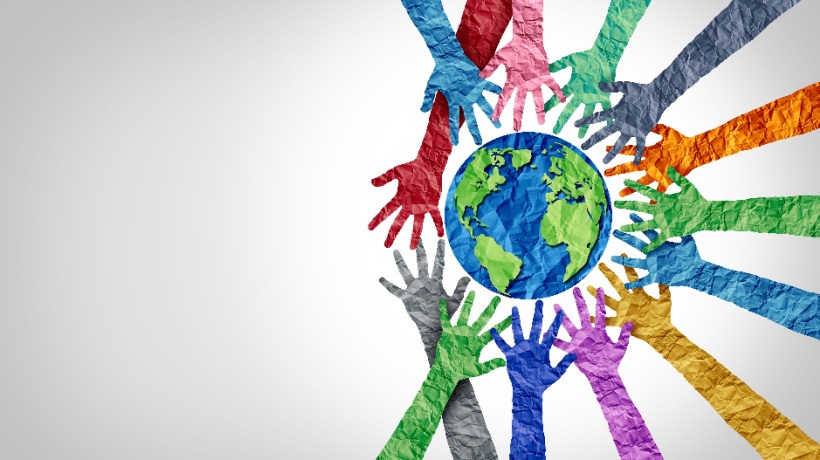How To Create Multicultural eLearning Experiences
Your audience is a diverse mix of cultures and backgrounds. Everyone has their own beliefs, values, and opinions to share. Multicultural eLearning celebrates and honors these differences. It gives online learners the opportunity to explore the world through their peers, and deepen their own self-awareness. In this article, I'll present the benefits of multicultural eLearning, and I'll give 4 tips for creating positive multicultural eLearning experiences.
5 Benefits Of Multicultural eLearning
1. Improves Online Collaboration.
Multicultural eLearning environments allow people from all walks of life to freely discuss topics. They can share their ideas and opinions without fear of being judged. As such, they are able to collaborate with their peers and benefit from one another's experience.
2. Allows For Free-Flowing Knowledge Exchange.
Online collaboration gives learners the opportunity to expand their knowledge base and help others do the same. Multicultural eLearning breaks down the barriers that typically hinder the knowledge sharing process. As a result, online learners can develop their skills and enhance their understanding by interacting with their peers.
3. Fosters A Supportive Learning Culture.
Online learners know that their thoughts and ideas matter, regardless of their cultural background. They have the ability to voice their opinions and concerns in a safe and supportive community atmosphere. This facilitates a positive learning culture wherein online learners can get the information and guidance they need. Tolerance, acceptance, and respect are the pillars of effective multicultural eLearning.
4. Promotes Cultural Diversity.
Everyone in your audience has the chance to discover different cultures, beliefs, and societal norms. Multicultural eLearning makes them aware of the fact that everyone brings something unique to the experience. Their differences are acknowledged and honored, which promotes cultural diversity. No one is afraid of sharing their personal insights, so they are more willing to share their stories.
5. Empowers Online Learners.
Cultural diversity and awareness helps online learners feel confident about who they are and what they have to offer. They understand that their unique background and talents will benefit the group, as a whole. This empowers them to be their most authentic selves and actively participate in the process.
4 Tips For Creating Multicultural eLearning Experiences
1. Incorporate Real World Examples.
Discussing multicultural topics and the importance of tolerance is one thing. But seeing it in action is quite another. Real world examples help online learners relate to others' experiences and backgrounds. News articles, case studies, and emotionally compelling stories are all valuable teaching tools. They give online learners a global perspective so that they are more compassionate and accepting of their peers.
2. Encourage Online Group Collaboration.
One of the best ways to cultivate a multicultural eLearning environment is to promote peer interactions. This gives them the opportunity to discuss ideas and opinions with people from different backgrounds. Assign group projects that center on problem-solving or eLearning content creation. Online learners must work together to produce the finished product and then present their findings. Project Management online platforms are ideal for online group collaboration. Members of the group can share documents, assign tasks, and offer feedback.
3. Incorporate Culturally Diverse eLearning Characters.
Include a good mix of eLearning characters in your eLearning course design so that everyone can relate to the subject matter. For example, your real world story might include diverse personas who highlight certain aspects of their culture. They can explore customs and societal beliefs that raise cultural awareness. Just make sure that you understand their backgrounds before you portray them. You don't want to offend or alienate a certain group by including stereotypical traits.
4. Focus On Self-Reflection.
Certain individuals may not even know that they are culturally intolerant. There are underlying beliefs and ideas that stand in the way of multicultural eLearning. For example, an experience in the past that caused them to form assumptions or opinions about a culture. These assumptions may be completely inaccurate, but they are still part of the online learner's cognitions. As such, it's important to make time for self-reflection. Encourage online learners to evaluate their own beliefs and motivations. Do they have biases? Do they have such a strong sense of identity that they are unable to connect with other cultures? And why do these cognitions exist in the first place?
The most important aspect of developing multicultural eLearning is knowing your audience. Carry out surveys and focus groups beforehand to delve into their backgrounds, preferences, and experience levels. This will help you cultivate a supportive multicultural eLearning environment that celebrates diversity.
Definitely, in multicultural eLearning environments it's difficult to get that personal connection we crave. Read the article 8 Tips To Build An Online Learning Community to give your online learners that sense of belonging, regardless of their location, background, or personal goals.


![How To Create Culturally-Aware eLearning For Global Audiences [eBook]](https://cdn.elearningindustry.com/wp-content/uploads/2021/11/shutterstock_1933705079.jpg)





